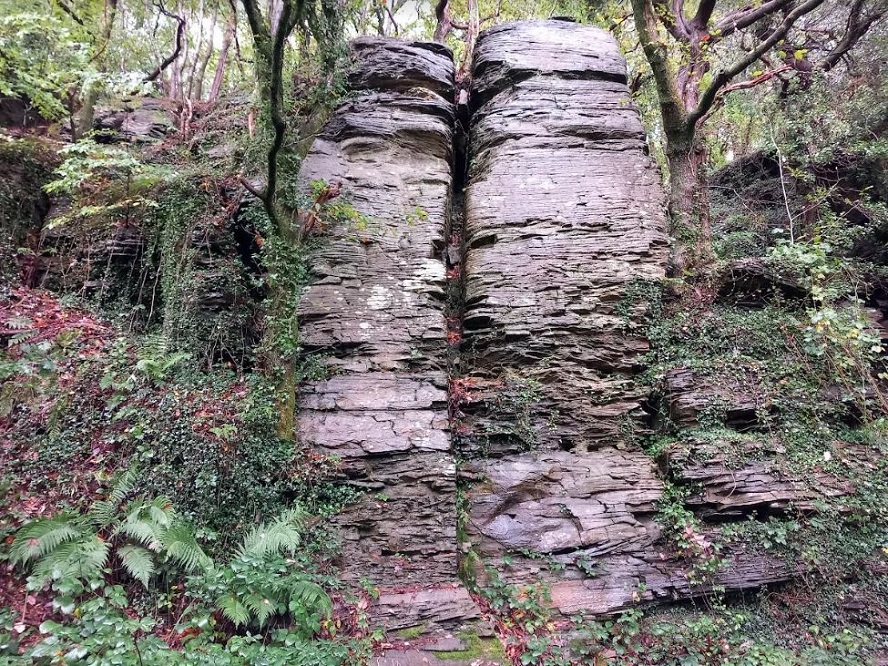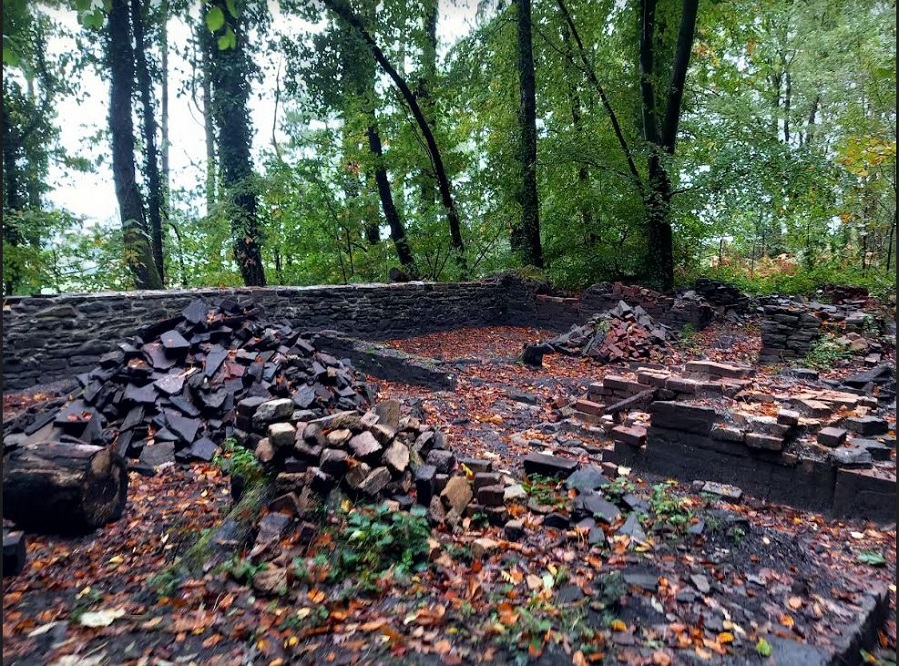Letter from Craig Gwladus Woods

CJ Wagstaff
Weather Warning
I arrived in Penscynor to a fanfare of punishing rain; each huge glob landing like a shotput on the windshield. From the passenger seat, I could already see gusts of wind battering the tree line like some aggrieved poltergeist.
I spent a final moment soaking up the car’s warmth before heaving myself out into the drizzle, the gravel-rich car park turning to a grey paste under my boots.
It’s not that I was ill-prepared: I had seen the yellow weather warning the day before, but today I was a spiritual channel for Fellwalker Alfred Wainwright:
There’s no such thing as bad weather, only unsuitable clothing.
Craig Gwladus is a wooded hillside in South Wales which overlooks the diverse and sprawling Vale of Neath. It’s not the most exalted peak in the area, rising to a paltry 150 metres at its zenith.
Nearby Drumau, with its hundreds of meandering steps, stretches to 272 metres. Craig y Llyn, with its eastern slopes bleeding into the Rhondda, has a topographic prominence of 392 metres.
Broken
I approached the middle car park at 10am, the air sated with the smells of sawdust and wet earth. I had arranged to meet a small group of volunteers along with the park ranger, Tom.
Here, Friends of Craig Gwladus had set up their base of operations: a small cluster of brightly painted storage containers attained through various grants and donations.
I watched Tom and company divide their tasks for the day, which included the cutting and sawing of various lengths of timber for new benches.
The park had recently seen a spate of vandalism to the existing infrastructure, which I was told is nothing new.
Of 100 nesting boxes installed within the woodland, all those within reach were now broken.

A dreadful mess
As we spoke, an elderly man lumbered towards us through the rain, assisted by a wooden cane. He wore a heavy waterproof jacket, with cargo shorts exposing gnarled but strong legs. He was accompanied by an ancient little dog.
Ian is a long-term Friend who became involved with the park after retiring a decade ago.
He informed me of the Great Chainsaw Massacre of the early 2000s, during which the Welsh Government levelled much of the woodland in an attempt to stop the spread of Larch disease.
The effort was ultimately a detriment to the park and its habitats.
‘They were cowboys’, he said ‘They left a dreadful, dreadful mess.’
The Friends of Craig Gwladus was formed in 2007 as a pressure group to coax remedial action out of the government. This never materialised, and when the core group began to administer their own repairs, the Friends’ numbers plummeted.
‘There are a lot of talkers around’, said Ian, ‘but not a lot of workers.’
During our conversation, a canvas shelter was erected by two other volunteers, whilst the youngest member of the group wrestled with a tangle of undergrowth nearby.
‘Clearing the land is the hard part’, Ian told me, looking towards the boy.
‘Planting is easy.’

Natural materials
I ascended from the car park to the drift mine trail, plunging into a pocket of lush forestry. I soon found myself at height, with a towering cliff to my right, and the Vale of Neath rolling away south beneath me.
The rock face was sheer, formed by a glacier during Wales’ last ice age over 18,000 years ago. Great chimneys of layered sediment were visible, indicating the astonishing geological age of the structure.
Thin chutes of water, clear as champagne, streamed downwards. I traced one up to the top where it spluttered over the precipice.
Gaping upwards, I felt vertigo begin to seize me and quickly righted my gaze.
Far above and out of sight were the dram roads, the final vestiges of the park’s mining heritage, used in the 19th century to deliver coal from the hillside to the Tennant Canal and then to Swansea Docks.
Earlier in the year there had been an effort to sustainably restore Gelliau Colliery’s smithy using natural materials sourced from the site.
The project had received fervent support from The Society for the Protection of Ancient Buildings.

Life-sustaining
Further along the trail, I came to a recess in the wall which appeared almost supernatural: an extraordinary living alcove filled with dazzling light.
The prehistoric rock was coated: in moss which glistened like emerald; ferns with enormous drooping fronds; winding roots which covered the surface like trails on a map.
Whole trees grew horizontally out of clefts and then laboured upwards, striving for light.
Compelled, I pushed a splayed hand into a pillow of moss and watched as liquid heaved out of its pores and over my fingers.
It was viscous, glutinous; not just water but some life-sustaining blend akin to nectar or sap. I thought that I might grow if I drank it, like Merry and Pippin drinking Ent-draught in Tolkien’s The Two Towers.
As I continued, the sounds of twigs and acorns underfoot stirred scores of birds from their briars, propelling them for a confused moment into my path.
Coal Tits, Blue Tits, Great Tits and Nuthatches all roost here, in addition to a single, muddy raven’s nest in the east of the park.
Ian had shown me some of his nest boxes; neat little feats of carpentry fit for a variety of species.

Gratified
Before beginning my descent, I paused in a clearing overlooking the valley. In the middle distance, the River Neath snaked into view and then disappeared again.
Below me, the terracotta crowns of trees danced in the weakening wind. Above, ragged clouds had crumbled apart to reveal a low sun, which now bathed me through the canopy.
When I returned to basecamp through an avenue of aging beech trees, I found most of the volunteers resting and picking at packed lunches, gratified by the morning’s work.
Ian, despite an old rugby injury, folded himself over a rotting bench, pushing and pulling a bow saw over the grain. The little dog, beard as grey as his master’s, slept in the grass.
Read more from CJ here
Support our Nation today
For the price of a cup of coffee a month you can help us create an independent, not-for-profit, national news service for the people of Wales, by the people of Wales.




